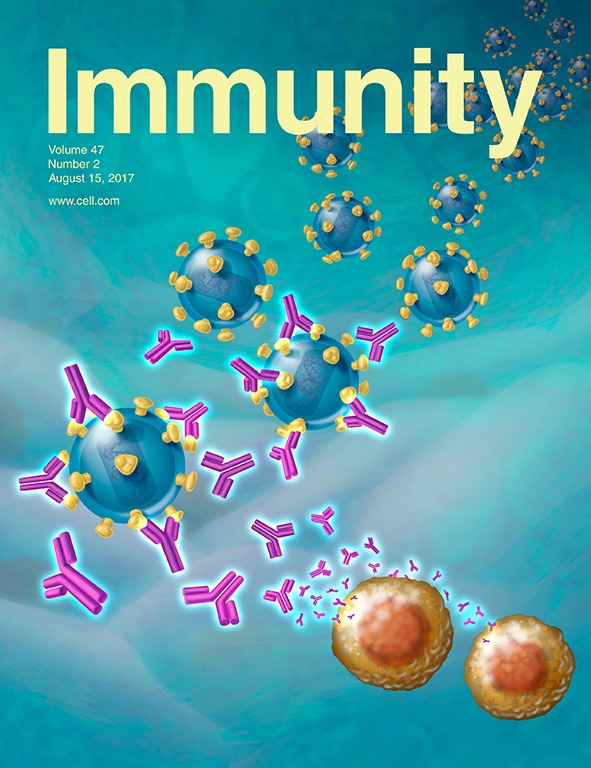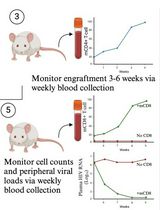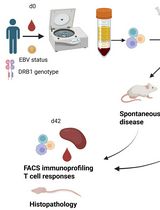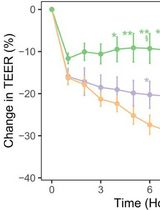- EN - English
- CN - 中文
Extraction of DNA from Murine Fecal Pellets for Downstream Phylogenetic Microbiota Analysis by Next-generation Sequencing
采用新一代测序技术从小鼠粪粒中提取DNA进行下游微生物群进化分析
发布: 2018年02月05日第8卷第3期 DOI: 10.21769/BioProtoc.2707 浏览次数: 12098
评审: Ivan ZanoniMagdalena MatusiakAnonymous reviewer(s)
Abstract
Mouse models are widely used to evaluate the potential impact of the gut microbial composition on health and disease. Standardized protocols for sampling and storing murine feces, as well as for extracting DNA from these fecal pellets are needed to limit experimental variation between different studies. Both efficient lysis of the microbiota and the quality of the obtained fecal DNA are important for allowing the downstream next-generation sequencing to cover the phylogenetic diversity of both Gram-negative and Gram-positive bacteria living in the mouse gut. Here we present a detailed protocol for fecal sample collection and DNA extraction that we validated in a study on the impact of inflammasomes on the murine gut microbiota. This protocol for DNA extraction from murine fecal pellets utilizes a combination of mechanical and chemical lysis, which aligns with the procedure that was recently recommended as a benchmark protocol for DNA extraction from human feces.
Keywords: Gut microbiota (肠道微生物群)Background
Limiting technical variation within as well as between laboratories is imperative for reproducibility and hence for scientific progress from experimental research. Within the expanding gut microbiota research community, a plethora of methodologies are used to profile the phylogenetic composition of the intestinal ecosystem. Each step in this microbiota analysis process is subject to technical variation depending on the protocol or the materials used. For instance, comparing several protocols to extract DNA from murine feces showed striking differences in the obtained results even within the same laboratory (Ferrand et al., 2014). Therefore, it is clear that standardized protocols are needed to enable meta-analyses of multiple different studies.
For analyzing the human fecal microbiota, a large international consortium of researchers recently compared the effects of numerous technical approaches in every single step of the gut microbiota analysis pipeline in several independent laboratories (Costea et al., 2017). This study identified differences in the DNA extraction method as the biggest influence on the downstream gut microbiota analysis results. Based on the obtained DNA quality as well as on the reproducibility between different laboratories, the so-called ‘Protocol Q’ was identified as the best one and was proposed as a benchmark for extracting DNA from human feces (Costea et al., 2017).
Although such multi-centered comparative studies have not been performed for murine fecal DNA extraction protocols, we recently reported a gut microbiota profiling study in mice using a protocol similar to the Protocol Q recommended for human fecal DNA extraction (Mamantopoulos et al., 2017). Like the latter, our protocol uses a combination of mechanical bead-beating and chemical lysis with the QIAGEN QiaAmp® Stool Kit. Indeed, it has been reported that mere chemical lysis of feces results in an underrepresentation of DNA from Gram-positive bacteria that have a thicker cell wall (Salonen et al., 2010). In contrast, both Protocol Q and our protocol detailed below are expected to result in efficient lysis of both Gram-positive and Gram-negative bacteria.
Materials and Reagents
- Filter tip, clear, sterile F. Gilson P1000, 60 PCS/Box (Greiner Bio One International, catalog number: 740288 )
- Filter tip, clear, sterile F. Gilson P-200, 96 PCS/Box (Greiner Bio One International, catalog number: 739288 )
- Standard filter tip, 20 µl, clear, universal, sterile, 96 pieces per rack (Greiner Bio One International, catalog number: 774288 )
- Soil grinding SK38 2 ml tubes (Bertin Technologies, catalog number: KT03961-1-006.2 )
- Eppendorf® Tubes 3810X, 1.5 ml, g-safe® centrifugation stability, Eppendorf QualityTM, colorless, 1,000 pcs. (Eppendorf, catalog number: 0030125150 )
- Ethanol absolute, EMSURE® ACS, ISO, Reag. Ph. Eur. analytical reagent (Merck, MilliporeSigma, catalog number: 1.00983.1000 )
- UltraPureTM DNase/RNase-Free Distilled Water (Thermo Fisher Scientific, GibcoTM, catalog number: 10977035 )
- QIAamp® Fast DNA Stool Mini Kit (QIAGEN, catalog number: 51604 ), containing the following:
- QIAamp Mini Spin Columns
- Collection Tubes (2 ml)
- InhibitEX® Buffer
- Proteinase K
- Buffer AL
- Buffer AW1 concentrate
- Buffer AW2 concentrate
- Buffer ATE
- QIAamp Mini Spin Columns
Equipment
- Finnpipette F1, 100 to 1,000 μl (Thermo Fisher Scientific, catalog number: 4641100N )
- Finnpipette F1, 20 to 200 μl (Thermo Fisher Scientific, catalog number: 4641080N )
- Finnpipette F1, 2 to 20 μl (Thermo Fisher Scientific, catalog number: 4641060N )
- Beakers
- -80 °C freezer
- Precellys®24 (Bertin Technologies, catalog number: EQ03119.200.RD00.0 )
- Thermoshaker with heating block for 24 x1.5 ml microtubes (Grant Instruments, catalog number: PHMT-PSC24N )
- Microcentrifuge 5417R with rotor for 1.5/2 ml tubes (Eppendorf, model: 5417 R , catalog number: 22 62 180-7)
- Vortex mixer (Merck Eurolab, catalog number: MELB 1719 )
- NanoDrop spectrophotometer
Procedure
文章信息
版权信息
© 2018 The Authors; exclusive licensee Bio-protocol LLC.
如何引用
Eeckhout, E. and Wullaert, A. (2018). Extraction of DNA from Murine Fecal Pellets for Downstream Phylogenetic Microbiota Analysis by Next-generation Sequencing. Bio-protocol 8(3): e2707. DOI: 10.21769/BioProtoc.2707.
分类
微生物学 > 微生物-宿主相互作用 > 细菌
免疫学 > 动物模型 > 小鼠
系统生物学 > 基因组学 > 种系遗传学
您对这篇实验方法有问题吗?
在此处发布您的问题,我们将邀请本文作者来回答。同时,我们会将您的问题发布到Bio-protocol Exchange,以便寻求社区成员的帮助。
Share
Bluesky
X
Copy link














